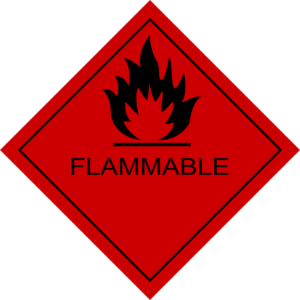5 Potential Risks of ventless fireplace installation
Many homeowners in Washington DC want a fireplace installed in a room that currently does not have one. When you decide to have a fireplace installed in your home, you have many options. However, one of the first choices you’ll likely need to make is whether you will have a ventless or ventilated fireplace installed. Some homeowners will opt for ventless or vent-free options as a means of saving money. Unfortunately, ventless fireplaces present specific risks.
 One of the greatest risks of using a ventless fireplace is that of carbon monoxide poisoning, which can be deadly inside your home. Specifically, carbon monoxide is a colorless and odorless gas that, in high enough concentrations, can lead to serious health problems such as:
One of the greatest risks of using a ventless fireplace is that of carbon monoxide poisoning, which can be deadly inside your home. Specifically, carbon monoxide is a colorless and odorless gas that, in high enough concentrations, can lead to serious health problems such as:
 In addition to the higher risk of carbon monoxide poisoning involved with a ventless fireplace, there is also a more significant fire hazard with these types of fireplaces. The increased fire hazard is a result of the toxic by-products that are released into the air with each use. From there, many issues could lead to a house fire, including:
In addition to the higher risk of carbon monoxide poisoning involved with a ventless fireplace, there is also a more significant fire hazard with these types of fireplaces. The increased fire hazard is a result of the toxic by-products that are released into the air with each use. From there, many issues could lead to a house fire, including:
 A ventless fireplace can pose a risk to the respiratory health of people inside the home. In addition to carbon monoxide, there are numerous other toxic by-products that ventless fireplaces are known to release into the air.
Examples of toxic byproducts released by ventless fireplaces
A ventless fireplace can pose a risk to the respiratory health of people inside the home. In addition to carbon monoxide, there are numerous other toxic by-products that ventless fireplaces are known to release into the air.
Examples of toxic byproducts released by ventless fireplaces
 Last but not least, it’s worth mentioning that ventless fireplaces tend to release a lot of water vapor when they are in use. Due to the lack of a ventilation system, there isn’t anywhere for this water vapor to go or fully evaporate.
Increased moisture inside home results in the following risks:
Last but not least, it’s worth mentioning that ventless fireplaces tend to release a lot of water vapor when they are in use. Due to the lack of a ventilation system, there isn’t anywhere for this water vapor to go or fully evaporate.
Increased moisture inside home results in the following risks:
How ventless fireplaces work
Ventless fireplaces operate through the use of natural gas, propane, or even a type of gel; these free-standing units do not redirect exhaust or fumes from the fireplace to the outdoors. Instead, these units rely on indoor air for combustion and emit the gas back into the home. Ventless units are designed to emit lower levels of gases than a “traditional” fireplace with ventilation. As a result of the reduced gas levels, manufacturers believe that ventless fireplaces are safe. Despite the manufacturer’s claims of reduced gas levels, many fireplace professionals consider ventless fireplaces as unsafe. These fireplaces can pose a number of health, fire, and other risks to those in your home.Potential Risks of Ventless Fireplaces
When you take a minute to think about what a ventless fireplace entails, it makes sense that these units are not without their inherent dangers. Although there may be a lower amount of fumes exhausted by a ventless fireplace, there are still some fumes—and unfortunately, these fumes have nowhere to go but into your home and thus into the air you breathe. Once you have a better understanding of the many risks of ventless fireplaces, you’ll be able to make a better-informed decision regarding which type of fireplace is right for your home.Carbon Monoxide Poisoning
 One of the greatest risks of using a ventless fireplace is that of carbon monoxide poisoning, which can be deadly inside your home. Specifically, carbon monoxide is a colorless and odorless gas that, in high enough concentrations, can lead to serious health problems such as:
One of the greatest risks of using a ventless fireplace is that of carbon monoxide poisoning, which can be deadly inside your home. Specifically, carbon monoxide is a colorless and odorless gas that, in high enough concentrations, can lead to serious health problems such as:
- nausea
- dizziness
- loss of consciousness
- asphyxiation
Increased Fire Hazard
 In addition to the higher risk of carbon monoxide poisoning involved with a ventless fireplace, there is also a more significant fire hazard with these types of fireplaces. The increased fire hazard is a result of the toxic by-products that are released into the air with each use. From there, many issues could lead to a house fire, including:
In addition to the higher risk of carbon monoxide poisoning involved with a ventless fireplace, there is also a more significant fire hazard with these types of fireplaces. The increased fire hazard is a result of the toxic by-products that are released into the air with each use. From there, many issues could lead to a house fire, including:
- an undiscovered gas leak
- a faulty burner
- furniture placed too close to the fireplace
Respiratory Health Risks of Ventless Fireplaces
 A ventless fireplace can pose a risk to the respiratory health of people inside the home. In addition to carbon monoxide, there are numerous other toxic by-products that ventless fireplaces are known to release into the air.
Examples of toxic byproducts released by ventless fireplaces
A ventless fireplace can pose a risk to the respiratory health of people inside the home. In addition to carbon monoxide, there are numerous other toxic by-products that ventless fireplaces are known to release into the air.
Examples of toxic byproducts released by ventless fireplaces
- nitrogen dioxide
- sulfur dioxide
- hydrocarbons
Risk of Sensor Failure
All ventless fireplaces are equipped with a small device known as an oxygen-depletion sensor. The purpose of these sensors is to detect the levels of oxygen in the room and to automatically shut off the fireplace if the sensor detects low oxygen. Unfortunately, these sensors are subject to failures, especially when you consider the fact that they are small electronic devices that are not designed to last forever. If the oxygen sensor fails, you could be operating your ventless fireplace in a dangerous environment where oxygen levels are unsafe in the room, which could be hazardous to your health and the health of your loved ones.Potential for Mold and Mildew
 Last but not least, it’s worth mentioning that ventless fireplaces tend to release a lot of water vapor when they are in use. Due to the lack of a ventilation system, there isn’t anywhere for this water vapor to go or fully evaporate.
Increased moisture inside home results in the following risks:
Last but not least, it’s worth mentioning that ventless fireplaces tend to release a lot of water vapor when they are in use. Due to the lack of a ventilation system, there isn’t anywhere for this water vapor to go or fully evaporate.
Increased moisture inside home results in the following risks:
- mold
- mildew
- home moisture damage

Thanks for the tip about how I should also watch out for mold or mildew growth when planning to install a new fireplace. I’d like to find a good installation service soon because I’m planning to focus on home improvements starting next year. I can imagine how getting a new fireplace would be great for that.